Different Types of Power-Grid Connections
Let’s see different types of transmission line layouts, used for the interconnection of electrical substations. Some commonly used layouts are Radial Substation, Tapped Substation, LI – LO means line in line out substation & Interconnected substation. Before starting with interconnection layouts, let’s understand first that every transmission line has at least two circuit breakers, installed at the ends of the line. Also, there are line and bus isolators on both sides of the circuit breaker. Hence in case of fault on the transmission line, circuit breakers at both ends of the line trip, isolating the fault completely.
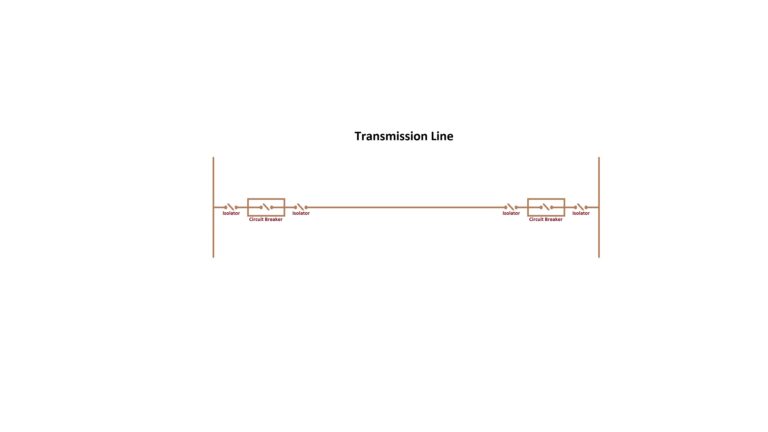
So let’s start with different schemes or layouts of substation interconnection.
1. Radial Substation
In this type of layout, the electrical substation has a single transmission line as a power source, and loads are connected to respective feeders. Since this type of layout needs only one transmission line as a power source, it becomes an economical layout type.
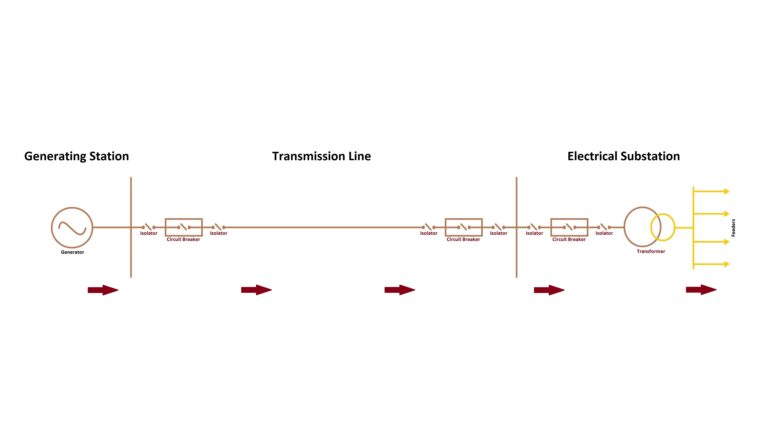
However, in the event of source failure, the complete substation goes out of the grid.

Also, in case of fault on the Transmission line, the complete substation goes out of the grid.

Subsequently causing complete power breakdown of the connected load. Hence such type of supply system is highly unreliable & usually it is used for remote locations.
2. Tapped Substation
In this type of layout, on an existing nearby power transmission line, the power source for the newly constructed substation is tapped. Hence called a tapped substation. This is also an economical supply system.

However, in the event of source failure, the complete substation goes out of the grid.

Also, in case of fault on the tapped source line, the complete substation goes out of the grid.
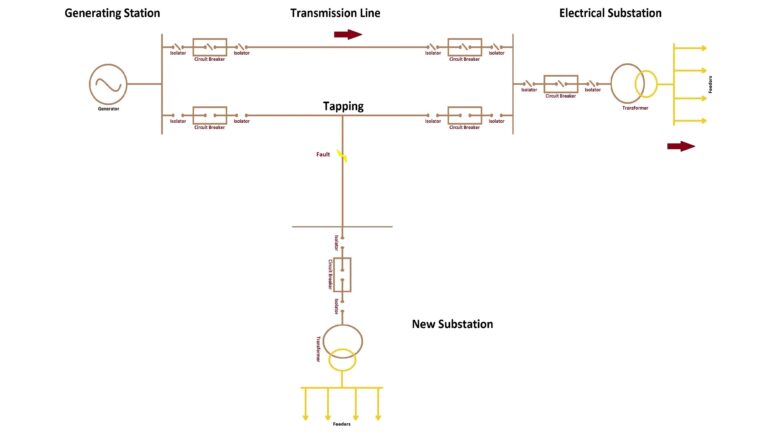
Subsequently causing complete power breakdown of the connected load. Same as in the case of the radial substation. Hence such type of supply system is highly unreliable & used for non-critical or unimportant loads.
3. LI - LO means Line-In & Line-Out Substation
In this type of layout, as the name says, a line is brought in and taken out of the substation. Consider an existing power transmission line connecting two substations, transmitting power in this direction. And a new substation is constructed nearby the transmission line. Now transmission line is constructed and taken in as a power source for the new substation. And similarly, a line is taken out to feed the old substation completing the circuit. This line-in and line-out layout is called Li-lo. Power flows in the direction same as before adding an extra load of the newly constructed substation.
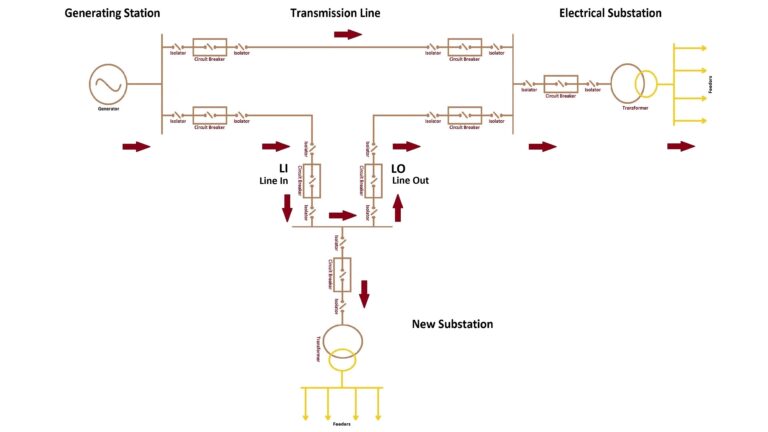
This type of layout is more reliable than the previous two layouts because, in case of a fault on one line, the other line continues to supply power and vice versa.
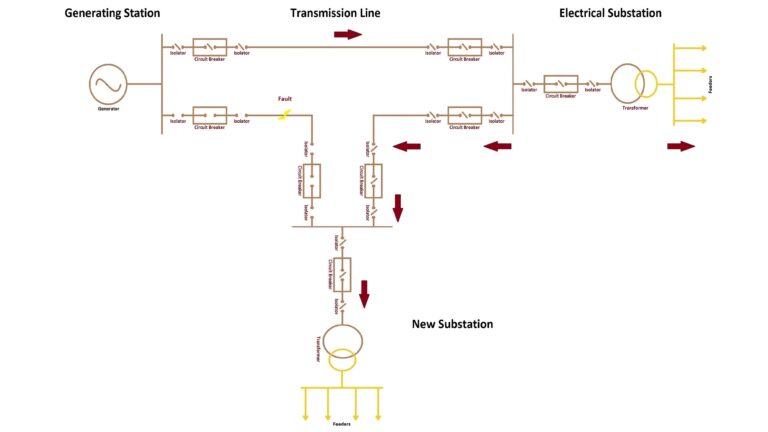
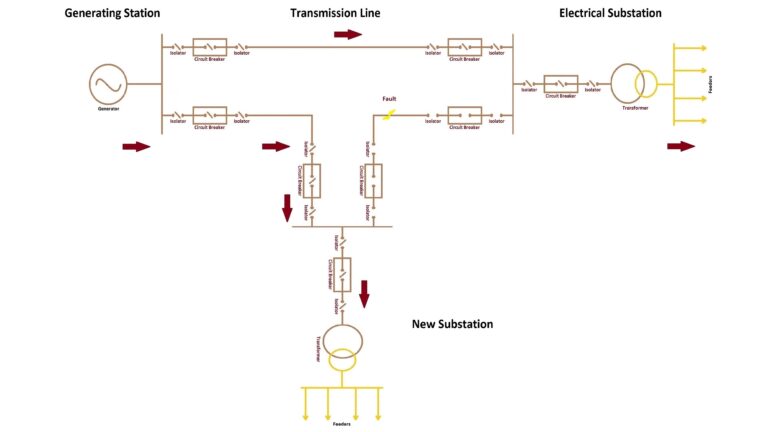
However, an outage or breakdown of both the lines at the same time affects the load connected.

Hence such a type of system being expensive is used to feed a relatively more important load.
4. Interconnected Substation
In this type of layout, the substation is connected to more than two power sources. Let’s consider an existing transmission line connecting two substations, transmitting power in this direction. Also, consider one more substation connected to other generating stations or lines & feeding its connected load. A new substation is constructed nearby. From the existing line as well as the existing substation power sources for the substation are taken.

Now in case of fault on any one of the lines, the other two lines continue to supply power.
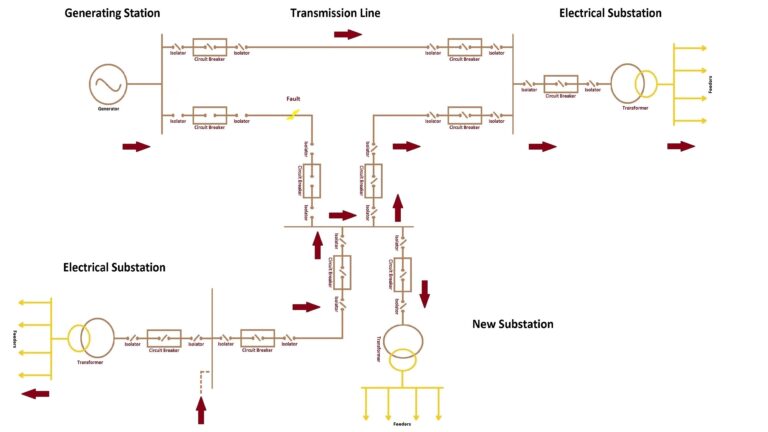

Also in case of a breakdown of two lines at the same time, the third line continues to supply power.



Hence newly constructed substation has multiple power sources, so the load connected to this substation face power breakdown very rarely. This type of layout is very expensive, but at the same time it is highly reliable, important load is fed by such substations.